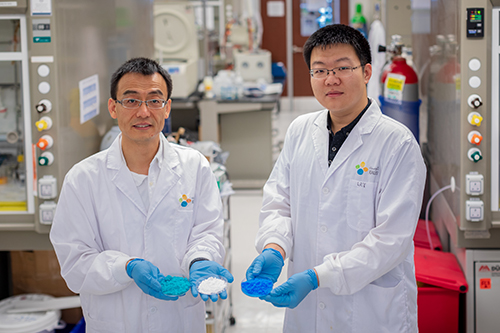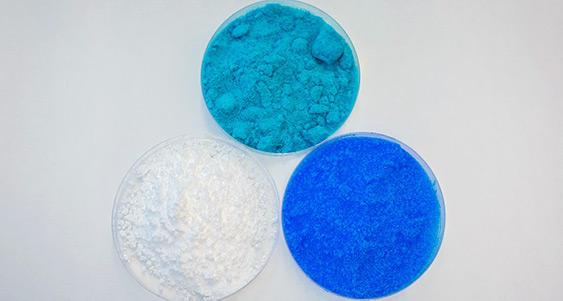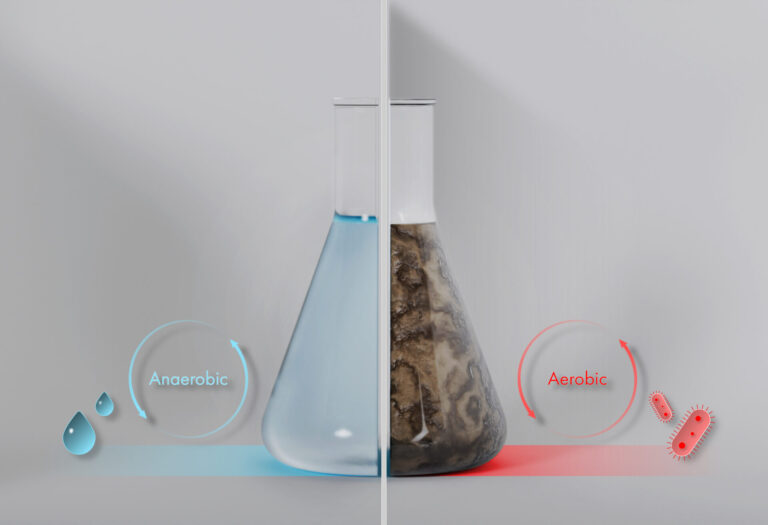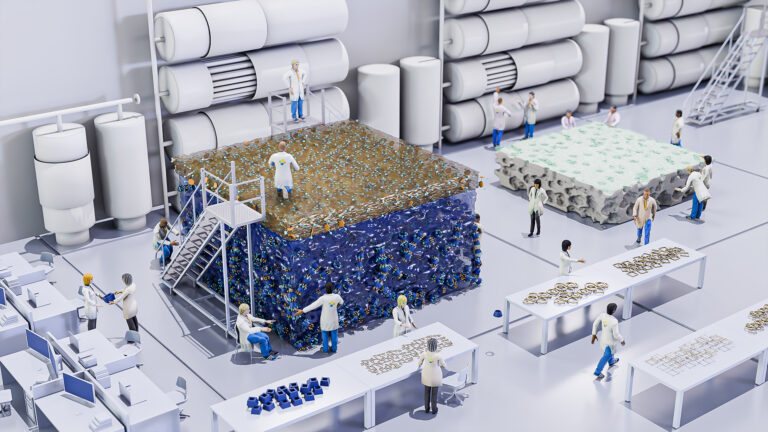Environmental Science and Engineering
Lighting the way to harvest water from air
A low-cost method for collecting water from the atmosphere could be used to provide potable water to dry, inland regions.

Commonly available salts and sunlight can harvest water vapor from the air to provide potable water to arid and land-locked regions of the world.
Many parts of the world, such as the sub-Saharan countries of Africa, have little or no access to surface water or ground-water supplies and often have to rely on the transportation of fresh water over long distances, which is costly and inefficient.
Yet even in the driest desert regions there is an abundance of water in the atmosphere, consisting of water vapor and water droplets. The atmosphere has been estimated to contain as much as six times more water as all the rivers on Earth and around 10 percent of all the fresh water in lakes.
Now, Ph.D. student Renyuan Li and his supervisor Peng Wang from KAUST have investigated the effectiveness of commonly available salts that capture water vapor from the air at night, and when placed under sunlight, release drinking water.

Three common salts—(L-R) magnesium sulfate, copper chloride and copper sulfate—were effective in capturing water from air with relative humidity as low as 15 percent.
© 2018 KAUST
“Although techniques like engineered-cold surface-induced condensation or fog harvesting are used around the world, low year-round relative humidity levels and a lack of power to run condensers often prevent the harvesting of atmospheric water for many regions,” says Li.
The researchers investigated 14 common anhydrous and hydrated salt couples for their physical and chemical stability and for their water-vapor harvesting and release capacity to find that three of these salts—copper chloride, copper sulfate and magnesium sulfate—were effective in capturing water from air with relative humidity as low as 15 percent. Furthermore, when subjected to even weakened sunlight, these salts released all of their water to produce fresh, clean water.
“We found that these salts not only work when the sunlight is strongest, at noon or early afternoon, but that they also perform well during other times of the day, such as morning and late afternoon,” explains Li. “This is important because the extended operating hours could broaden the range of conditions in which the process can be used.”
The work demonstrates a low-cost, efficient method for harvesting water from the atmosphere using commonly used salts as an absorbent and sunlight as an energy source, which could be useful in many poor, dry regions.
“We are now working on salt-based composite materials with significantly enhanced water-uptake capacity, which we consider to be the second-generation of our atmospheric water generator,” says Wang.
References
-
Li, R., Shi, Y., Shi, L., Alsaedi, M. & Wang, P. Harvesting water from air: Using anhydrous salt with sunlight. Environmental Science & Technology 52, 5398-5406(2018).| article
You might also like

Environmental Science and Engineering
Combat climate change by eliminating easy targets

Environmental Science and Engineering
Wastewater treatment to fight the spread of antibiotic resistance

Bioscience
Digging into the world of plant-growth-promoting microbes

Bioscience
Unique microbiome discovered in mountain streams

Chemical Engineering
Unveiling the role of biomass-burning aerosols in atmospheric reactions

Chemical Engineering
Precision separations with perfect pores

Environmental Science and Engineering
Practical support for building sustainability into our cities

Environmental Science and Engineering




